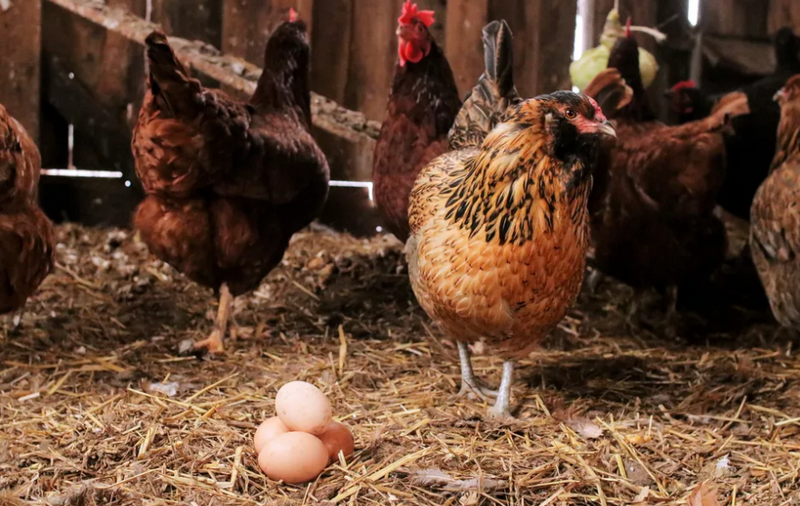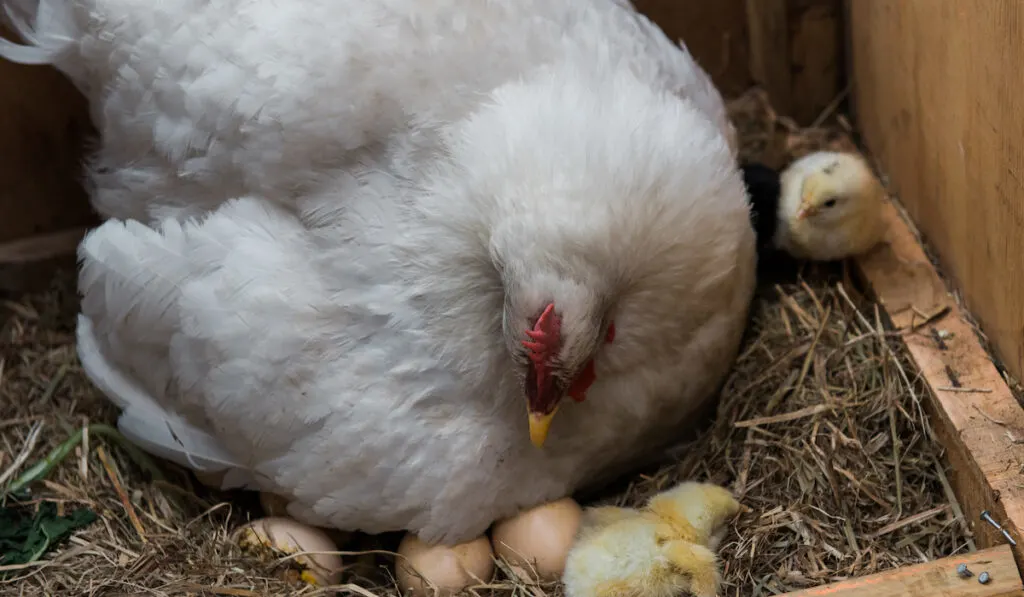Do Hens Produce Eggs Without A Rooster? A Comprehensive Guide
Have you ever wondered if hens can lay eggs without a rooster around? The answer might surprise you, but it's simpler than you think. In this guide, we’ll dive deep into the world of egg-laying hens, exploring their biology, behavior, and the role of roosters—or lack thereof—in the process. Whether you’re a backyard chicken enthusiast or just curious about how nature works, this article has got you covered.
Let’s face it, most people assume that hens need roosters to lay eggs. But here’s the thing—hens are natural egg machines, and they don’t need a rooster to get the job done. In fact, roosters only play a role if you’re looking for fertilized eggs. If you’re just after some fresh eggs for breakfast, a rooster is completely optional.
Now, before we dive into the nitty-gritty details, let’s clarify one thing: eggs are a big deal. Whether you’re raising chickens for personal consumption or running a small farm, understanding how hens produce eggs is crucial. So, buckle up because we’re about to break down everything you need to know about hens and their egg-laying prowess.
Read also:Who Is Lynda Carter A Journey From Wonder Woman To Iconic Star
Understanding the Basics: Do Hens Need Roosters to Lay Eggs?
Alright, let’s start with the million-dollar question: do hens really need roosters to lay eggs? The short answer is no. Hens are biologically designed to lay eggs regardless of whether a rooster is present or not. Think of it like this—if chickens were humans, hens would be the ultimate multitaskers, laying eggs like clockwork without needing any help.
Here’s the deal: a hen’s reproductive system is wired to produce eggs on a regular cycle. This cycle is influenced by factors like daylight, age, and health. Even without a rooster, a hen will continue to lay eggs as long as these conditions are met. The only difference is that the eggs won’t be fertilized, meaning they won’t hatch into chicks.
So, why does this matter? Well, if you’re raising hens for eggs, you might not even need a rooster unless you’re planning to expand your flock. Roosters have their own set of responsibilities, like protecting the flock and ensuring genetic diversity, but they’re not essential for egg production.
How Do Hens Lay Eggs Without a Rooster?
Let’s get technical for a moment. The process of egg-laying in hens is a fascinating biological phenomenon. Every hen has two ovaries, but only one is fully functional. This ovary produces yolk, which travels through the oviduct and eventually becomes an egg. The entire process takes about 24 to 26 hours, and it’s a continuous cycle.
Here’s a quick breakdown of how it works:
- Ovulation: The hen’s ovary releases a yolk, which begins its journey through the oviduct.
- Formation: As the yolk moves through the oviduct, layers of albumen (egg white), membranes, and shell are added.
- Egg-Laying: Once the shell is fully formed, the egg is laid through the cloaca.
Now, here’s the kicker: this process happens whether or not a rooster is present. The only difference is that without a rooster, the egg won’t be fertilized. Simple, right?
Read also:Discover The Best Of Giacomo Gianniotti Movies And Tv Shows A Complete Guide
What Happens When a Rooster is Around?
When a rooster is part of the flock, things change slightly. Roosters have one primary job: mating with hens to fertilize their eggs. During mating, the rooster transfers sperm to the hen, which then fertilizes the yolk before it becomes an egg. If the egg is fertilized, it has the potential to develop into a chick if incubated properly.
But here’s the thing: not all hens will mate with a rooster, and not all eggs will be fertilized. It’s a selective process, and many factors can influence the outcome. So, while roosters are important for breeding purposes, they’re not necessary for egg production.
The Role of Daylight in Egg Production
One of the biggest factors affecting egg production is daylight. Hens are incredibly sensitive to changes in daylight hours, and their egg-laying cycles are closely tied to the seasons. During the longer days of spring and summer, hens tend to lay more eggs because their bodies are stimulated by the increased sunlight.
Here’s why daylight matters:
- Stimulation: Longer daylight hours trigger hormonal changes in hens, encouraging them to lay eggs more frequently.
- Consistency: Hens lay eggs consistently when they receive around 14 to 16 hours of daylight per day.
- Decline: As daylight hours decrease in the fall and winter, egg production may slow down or stop altogether.
For backyard chicken keepers, this means you might need to provide artificial lighting during the darker months to maintain egg production. But remember, it’s important to balance artificial lighting with the hen’s natural cycle to avoid stress or health issues.
Can You Trick Hens into Laying More Eggs?
Sort of. By providing supplemental lighting during the winter months, you can encourage hens to lay eggs more consistently. However, it’s important to do this responsibly. Overstimulating hens with too much light can lead to burnout or other health problems, so it’s best to follow a schedule that mimics natural daylight patterns.
The Benefits of Raising Hens Without a Rooster
If you’re thinking about raising hens for eggs, you might be wondering whether you really need a rooster. Here’s the good news: you don’t. In fact, there are several benefits to raising hens without a rooster:
- Less Noise: Roosters are known for their loud crowing, which can be a nuisance to neighbors. Without a rooster, your flock will be much quieter.
- Reduced Aggression: Roosters can sometimes become aggressive, especially when protecting their flock. Hens, on the other hand, are generally more docile and easier to manage.
- Simplified Care: Caring for a flock of hens is simpler than managing both hens and roosters. You won’t have to worry about mating rituals, territorial disputes, or other rooster-related issues.
Of course, there are situations where a rooster might be beneficial, such as if you’re planning to breed your hens. But for most backyard chicken keepers, hens alone are more than enough to meet their egg-laying needs.
Are There Downsides to Not Having a Rooster?
Not really. The only downside is that without a rooster, your eggs won’t be fertilized. If you’re not interested in breeding, this isn’t a problem. However, if you’re looking to expand your flock naturally, you’ll need to introduce a rooster at some point.
How Many Eggs Can a Hen Lay Without a Rooster?
The number of eggs a hen can lay depends on several factors, including her breed, age, and overall health. On average, a healthy hen can lay about 5 to 7 eggs per week, or around 250 to 300 eggs per year. Some high-producing breeds, like White Leghorns, can lay even more.
Here’s a quick breakdown of egg production by breed:
- White Leghorn: Up to 300 eggs per year
- Rhode Island Red: Around 250 eggs per year
- Australorp: Approximately 250 eggs per year
- Plymouth Rock: About 200 eggs per year
Keep in mind that egg production tends to decline as hens age. Most hens are most productive during their first two to three years of life, after which their egg-laying capacity gradually decreases.
What Happens When Hens Stop Laying Eggs?
As hens get older, their egg-laying frequency naturally decreases. This is a normal part of the aging process, and it doesn’t mean there’s anything wrong with your hens. However, if a younger hen suddenly stops laying eggs, it could be a sign of stress, illness, or nutritional deficiency. In such cases, it’s important to investigate the cause and address any underlying issues.
Common Myths About Hen Egg Production
There are plenty of myths floating around about hen egg production, and it’s time to set the record straight. Here are a few common misconceptions:
- Myth #1: Hens need roosters to lay eggs. False. As we’ve discussed, hens can lay eggs without a rooster.
- Myth #2: All eggs are fertilized. False. Only eggs laid by hens that have mated with a rooster are fertilized.
- Myth #3: Hens can lay eggs indefinitely. False. Egg production naturally declines as hens age.
By understanding the facts, you can make more informed decisions about raising hens and managing your flock.
Why Do These Myths Persist?
Many of these myths have been passed down through generations, often based on outdated information or misunderstandings about chicken biology. In today’s world, it’s easier than ever to access accurate information, but old beliefs can be hard to shake. That’s why it’s important to do your research and rely on credible sources when it comes to chicken care.
Tips for Maximizing Egg Production
If you’re serious about maximizing egg production, here are a few tips to keep in mind:
- Provide a Balanced Diet: Make sure your hens have access to high-quality feed that meets their nutritional needs.
- Ensure Clean Water: Fresh, clean water is essential for healthy egg production.
- Maintain a Clean Coop: A clean living environment helps prevent disease and stress, both of which can affect egg production.
- Monitor Health: Regularly check your hens for signs of illness or injury, and address any issues promptly.
By following these tips, you can help ensure that your hens remain healthy and productive for years to come.
What Should You Do if Egg Production Declines?
If you notice a decline in egg production, don’t panic. There are several potential causes, including stress, illness, or changes in the environment. Start by evaluating your hens’ living conditions, diet, and overall health. If the problem persists, consider consulting a veterinarian or a poultry expert for advice.
Conclusion: Embrace the Power of Hens
In conclusion, hens are incredible creatures capable of producing eggs without the need for a rooster. Whether you’re raising hens for personal consumption or as part of a small business, understanding their biology and behavior is key to success. By providing the right conditions and care, you can maximize egg production and enjoy fresh, delicious eggs all year round.
So, what’s next? If you’ve learned something new from this guide, why not share it with your friends or leave a comment below? And if you’re ready to dive deeper into the world of chicken keeping, check out our other articles for more tips and advice. Happy farming!
Table of Contents
- Understanding the Basics: Do Hens Need Roosters to Lay Eggs?
- How Do Hens Lay Eggs Without a Rooster?
- What Happens When a Rooster is Around?
- The Role of Daylight in Egg Production
- Can You Trick Hens into Laying More Eggs?
- The Benefits of Raising Hens Without a Rooster
- Are There Downsides to Not Having a Rooster?
- How Many Eggs Can a Hen Lay Without a Rooster?
- What Happens When Hens Stop Laying Eggs?
- Common Myths About Hen Egg Production
Article Recommendations


